Kilauea lava heading toward Royal Gardens, ocean


USGS / HAWAIIAN VOLCANO OBSERVATORY
The lava flow from the east vent of Puu Oo was 2.7 miles long Thursday, in this photo looking downslope. The Pulama pali is in the middle distance about 1.2 miles farther downslope. The coastal plain and ocean are in the far distance.
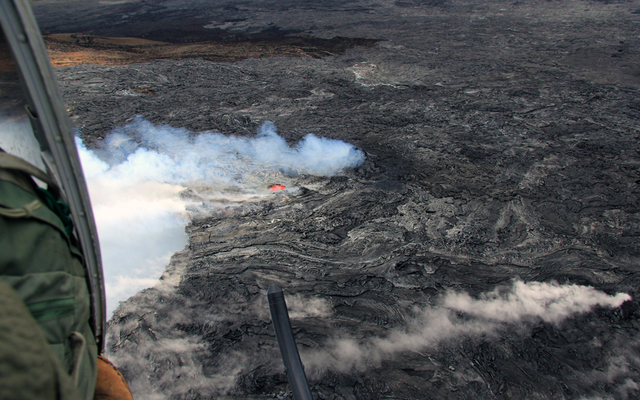
USGS / HAWAIIAN VOLCANO OBSERVATORY
Several vents have opened on Puu Oo’s northeast flank since last December. A spatter cone grew over one of the vents in mid-May and is visible at the center of the photo emitting bluish fume. In recent weeks, a vent opened upslope from (to the left of) the spatter cone, revealing bright incandescence. The northeast edge of Puu Oo’s crater, filled with white fume, is to the left of this vent.
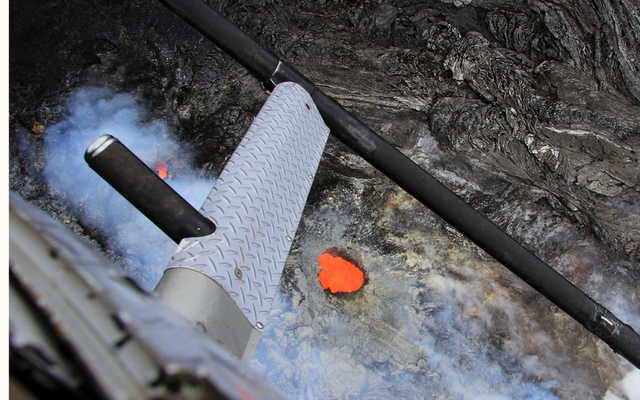
USGS / HAWAIIAN VOLCANO OBSERVATORY
An aerial view shows an open vent, a small window into a large, hot cavity beneath Puu Oo’s northeast flank. Inside, streams of lava from an unseen source (or sources) closer to the crater rim (visible at lower right) were cascading toward the upper left into unknown depths. This view, looking almost straight down, shows the surface of one of these lava streams through the open vent. The ground around this entire area is sunken, corroded, and unstable, and may someday collapse to form a pit.
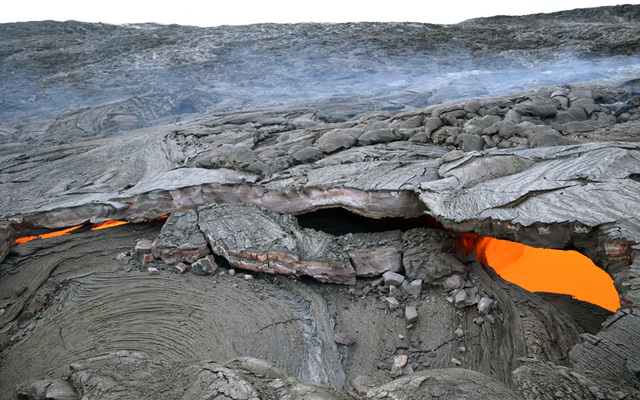
USGS / HAWAIIAN VOLCANO OBSERVATORY
The uppermost part of a nascent lava tube has several skylights, which reveal the lava stream within the flow, like capillaries beneath the skin. This is the uppermost skylight, just downstream from where the lava broke out from the east flank of Puu Oo on May 24.
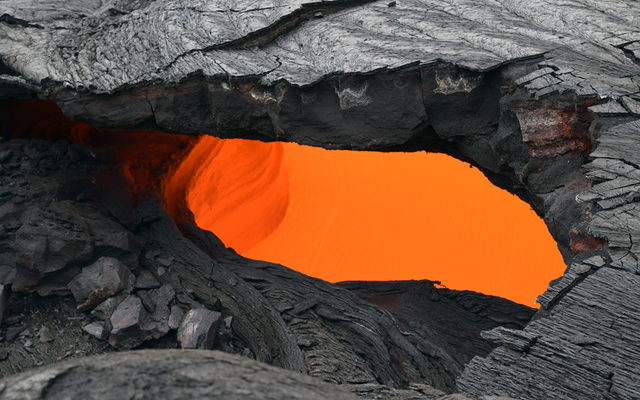
USGS / HAWAIIAN VOLCANO OBSERVATORY
The lava stream was flowing toward the photographer in this photo of a skylight taken Thursday. Higher lava levels are preserved in the shelf-like protrusions on the darker orange wall to the left.
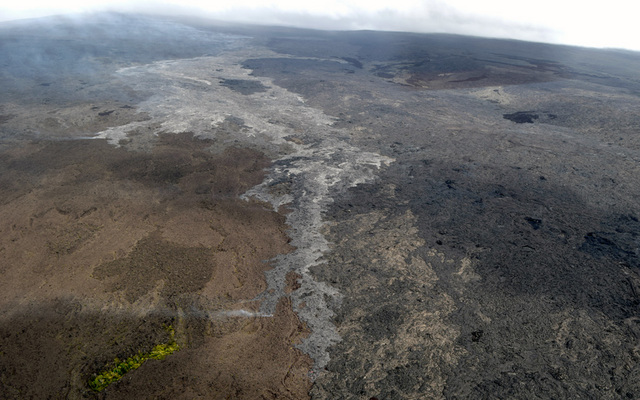
USGS / HAWAIIAN VOLCANO OBSERVATORY
This view is of the front of the active lava flow, looking upslope. Puu Oo is partly obscured in the clouds at upper left. Most surface activity on the advancing flow is actually where the flow widens, upslope of the flow front.







A lava flow that began last month on Kilauea is advancing at a rate of about 220 yards per day and, at its current flow rate, could reach the Pulama Pali in about 10 days as it passes a section of the abandoned Royal Gardens subdivision and, possibly, the ocean.
The flow, from the east slope of the Puu Oo vent, was about 2.7 miles long Thursday and is not threatening populated areas.
The flow appears to have captured most or all of the lava output from Puu Oo.
Another lava flow on the northeast slope of Puu Oo, which also began May 24, and a lava flow that began on June 27, 2015 are no longer active.
The flow is moving southeast over old lava fields along or just outside the Hawaii Volcanoes National Park boundary.
It’s developing a tube system as it advances.
Don't miss out on what's happening!
Stay in touch with breaking news, as it happens, conveniently in your email inbox. It's FREE!
“Skylights,” or holes in the hardened lava above the tubes, provide glimpses into the flowing lava below, as seen in photos released Thursday by the Hawaiian Volcano Observatory.
“If and when it (the lava flow) reaches the coastal plain and then the ocean depends on the evolution of a tube system and constancy of lava supplied from the vent—variables that are difficult to forecast at this time,” forecasters said.
The Pulama Pali is a steep slope above a coastal plain built up by previous lava flows. If it reaches the pali and plain, the lava may become visible from Kalapana.
The last time lava entered the ocean was in 2013.
Scientists have given the lava flow an informal nickname — “61g” — based on the record system scientists use to keep track of the eruption. The breakout is episode 61g in the long-running eruption of Kilauea.
One response to “Kilauea lava heading toward Royal Gardens, ocean”
Leave a Reply
You must be logged in to post a comment.





why on earth do people keep moving to that barren, unforgiving area.